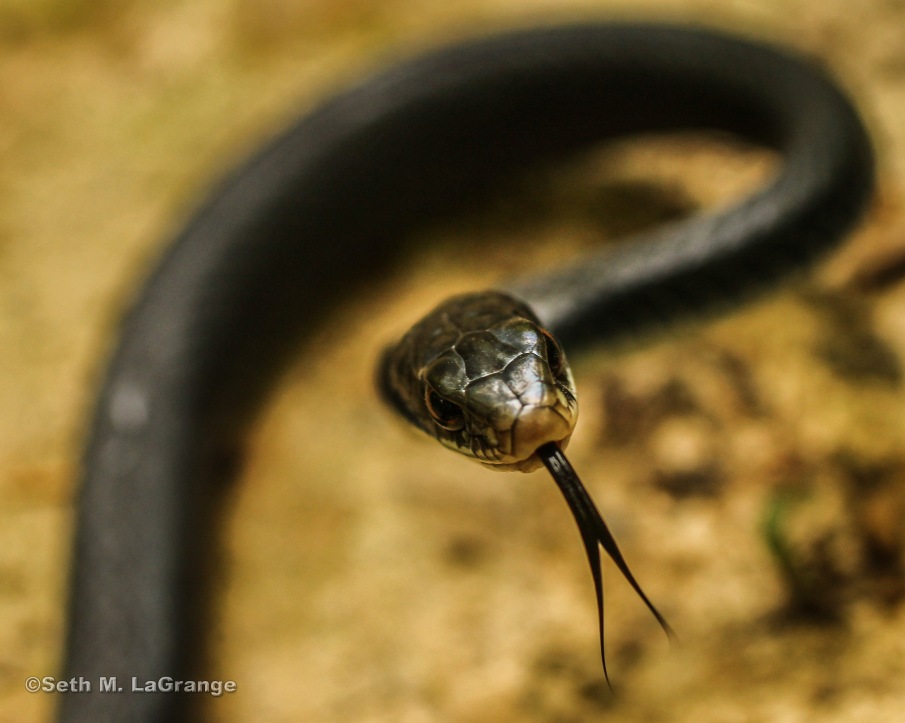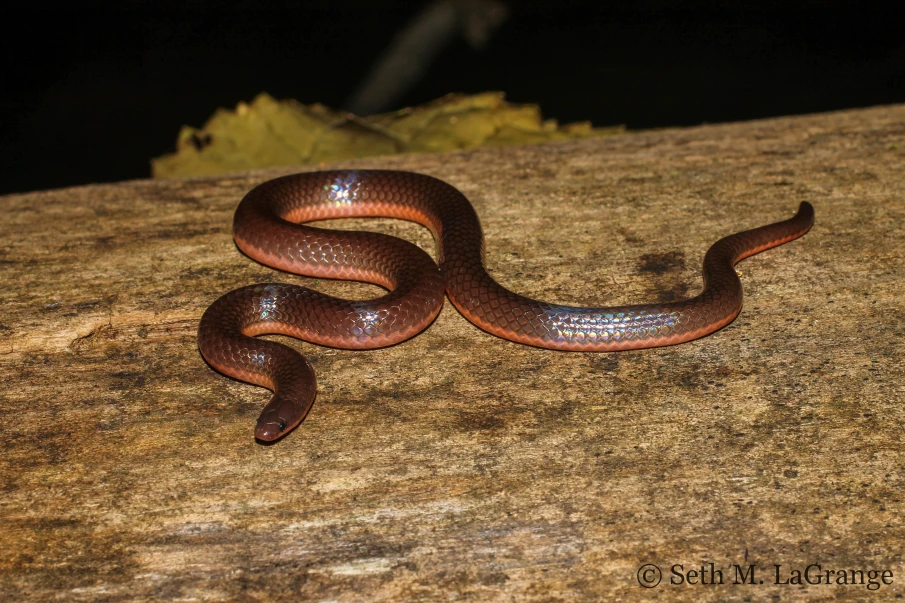As I mentioned in my last post about snakes many people seem to have an innate fear of serpents. This fear has led to the unwarranted persecution of snakes worldwide. The fear of snakes has also led to many common beliefs about snakes that simply are not true.
Myth #1: All snakes are venomous.
This myth is fairly easy to debunk and one that many of you are probably scratching your head at but for some reason when people see snakes they automatically come to the conclusion that it is venomous. To those people I say no. That poor little garter snake that you just hacked the head off of was quite harmless. There are approximately 3000 known species of snakes worldwide of which around 600 are venomous with only around 200 being listed as medically important by the World Health Organization. So that means that of the 3000 species of snakes only 20% are venomous and only 6% are considered dangerous. That being said all venomous snakes should be treated with respect but please don’t go chopping the heads off of every snake you see. Chances are it was harmless.

A southern black racer (Coluber constrictor priapus) from southern Illinois. He may look menacing but it is a bluff. He’s completely harmless.
Myth #2: All snakes are dangerous.
This myth goes along with the first myth in that first off most people think all snakes are venomous. I would say that no snake is particularly dangerous if given the respect that they deserve. That being said snakes can be dangerous just as any wild animal can be dangerous. I am of course talking about venomous snakes because the worst that a non-venomous snake can do (unless it is a very large constrictor) is bite you. While this may sound unpleasant it is not overly life threatening. Venomous snakes on the other hand carry with them varying degrees of danger. This is because each species of snake produces their own unique venom that interacts with the body in different ways. So some snakes are have more potent venom than others. However, as I have said before, if snakes are given the respect that they deserve then they are not particularly dangerous.
While I realize that human and wildlife interactions are inevitable and stumbling across a venomous snake could very easily happen by accident, I do not believe that accidental encounters are the main reason for deadly snake bites. Most of the snake bites that are reported each year are due to exotic reptile owners who are bitten by their pets, people who use venomous snakes for entertainment such as snake charmers, and irresponsible everyday citizens who try to remove snakes from their property. While the first two groups are just as important I want to focus on the last group. Everyday citizens are the people that I am trying to reach with this blog and to you I say stop harassing snakes on your property. One of the biggest reasons people are bitten is because they try to remove or kill snakes that happen across their property. I understand that if people have small children they would want to protect them but if you must remove the snake please call someone who is trained to do so such as animal control or if possible a local US Fish and Wildlife Service officer. By harassing the snake yourself you put you and your family at a greater risk of a bite. Don’t do that!
Myth #3: Snakes are evil.
Hmm…guess I can’t disprove this because I have no way to measure evilness. So to these people I say prove it to me and please don’t say because the bible says so. But in all seriousness, snakes are just animals. They don’t have the capability to be evil or to be good because they can’t produce rational thought. They go by their instincts and those instincts tell them to survive so when someone threatens a snake they do everything in their power not to die. If that means biting someone then they will. That doesn’t make them evil. I would say the person trying to hack their head off for no reason is the evil one.
Myth #4: Snakes are slimy.
I guess I understand this because snakes can look like worms and worms are slimy and snakes can wriggle around and they are sometimes shiny so they can look slimy. However, this is absolutely false. All snakes have dry scaly skin. They do not produce any sort of slime or mucus. Any time that I have been educating people about snakes they always ask if they are slimy before they hold them and then are pleasantly surprised when they are not. Most people don’t expect a snake to feel the way it does at all and find it very interesting. In fact, if you have never held a snake you should run out right now and do so. It is quite an awesome experience. Some snakes have shiny smooth scales that give them the look of being wet while other snakes such as rattlesnakes have ridged, or keeled, scales that cause them to feel rougher. Either way, there is nothing quite like holding a snake.

An eastern worm snake (Carphophis amoenus) from southern Illinois. This worm snake may look like a slimy worm but I assure you it’s not!
Myth #5: All snakes have fangs
Once again this goes back to the all snakes are venomous myth but even after I tell people that a particular snake is nonvenomous they still ask about their fangs. Only venomous snakes have fangs. The fangs are used to deliver the venom into their prey so a nonvenomous snake would have no use for fangs. Many snakes do have quite a few curved teeth in their mouth to grip prey but they do not have fangs. I promise!
Myth #6: Snakes are very aggressive and will chase people.
This is simply not true. In fact most snakes are not aggressive at all and will try to escape when a human comes too close. I think this misconception comes from people being bitten when trying to catch or after they catch a snake. If people have this misconception about all snakes they definitely have it about venomous snakes (all snakes are venomous anyway, right?) and that couldn’t be further from the truth. I have personal experience working with timber rattlesnakes which are indeed venomous and they are some of the most docile animals I’ve had the pleasure to work with. For the most part they would much rather people and other animals alike just walk on by and never know they were there. As I’ve said before and will say again, if snakes are given the respect and distance they deserve they are completely safe to be around.
As for snakes chasing people, I only know of one snake that supposedly does this. That snake is the black mamba (Dendroaspis polylepis) which is endemic to Africa and is highly venomous. It does have some pretty intimidating defense mechanisms but there is little evidence to support that these snakes will actually chase people.

A big male timber rattlesnake (Crotalus horridus) slithers away. He wants absolutely nothing to do with me.
There are plenty more snake myths roaming around but these are the ones that I hear most frequently. I may try to tackle the other myths in a later post. I try my best to educate people about snakes to hopefully change their perceptions and put an end to these common beliefs. Snakes along with all reptiles have been in decline for the past few decades for many different reasons which is why the unwarranted persecution and killing of these animals can be so detrimental. Snakes are near and dear to my heart because they have always fascinated me and I don’t want to see them disappear.


